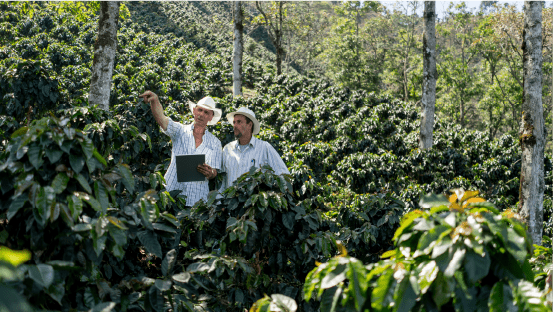Building Trust: The Power of Centralizing Data for Farmers
With both customers and investors becoming more conscious about the environment, the demand for sustainable products has increased dramatically over the past decade. But simply claiming that your product is sustainable is not enough anymore. While businesses have attempted to build a more transparent supply chain, it remains difficult to verify and validate such claims.
Blockchain technologies can help bridge this trust gap between businesses, their investors, and the consumers.
Blockchain and its role in Supply Chains
Traditional data base technologies require trust between both parties, this trust is difficult to gain, and it only takes a single false claim going viral to lose years of goodwill associated to your brand. Fabrication of historical data is possible in traditional data-keeping methods, so consumer skepticism is well justified.
Blockchains provide a way for companies to store and share data that is immutable and verifiable. Data that has been added to the ledger is very hard to modify as one has to essentially re-process the entire ledger. Data can however be “updated”, but only by adding new transactions. All previous transactions remain untouched.
The blocks in a blockchain
To record a transaction on a blockchain, we need to generate a new block. Each block in a blockchain contains:
- Transactional data, regardless of whether it is financial in nature or not.
- Cryptographic hash of the previous block, permanently linking the two together.
- Timestamp of when the block’s generation took place.
Once generated, a block is immutable. If a party wishes to modify the data in a past block, they must regenerate all the blocks since that one, an act that is impossible to veil because the new blockchain created will be vastly different from the existing one.
The blockchain vs. Traditional CENTRALISED ledgers
Blockchain makes it possible to have a decentralized ledger, where multiple stakeholders can each have a copy of the ledger in question. Making it easier to share data with one another without any doubt in the authenticity of said data.
Centralized Ledgers
- There is a single party that has complete access to the ledger.
- Transactions must go through the party which holds the ledger.
- Third parties cannot verify the authenticity of the ledger.
- Independent verification of transactions is not possible.
Distributed Ledgers (e.g., blockchain)
- Involved parties have a copy of the digital ledger
- Updating & maintaining the ledger requires a consensus mechanism (for example proof of stake)
- Third parties can cryptographically verify the authenticity of the ledger.
- Independent verification of the transactions is similarly possible.
Using blockchain technology to create a more transparent supply chain
Claims backed up by data
We learn to only trust immutable data at an early age. Writing and signing contracts with permanent ink instead of pencils is a perfect example of this psychological lean towards permanence. Sustainability claims with data reflected in the blockchain are far easier to trust, as opposed to a single page on your website. Such data can contain:
- Geolocations and timestamps during the manufacturing process; preparation, packaging, processing, etc.
- Tracking products and components throughout transport; letting your consumers know where the factories are located, how the transportation took place, etc.
But there is no need to stop at just these two data-points.
farmer connect – unlocking benefits along global supply chains
We’re a tech company that delivers tailored end-to-end traceability solutions to individual supply chains. Our traceability solutions are designed to support increased trust, efficiency, and sustainability within food and beverage supply chains by allowing for the secure sharing of data as well as the exchange and tracking of products and payments.
Businesses across the world can benefit from having a more transparent supply chain, and we help the farming industry accomplish exactly that. Tracking produce from one continent to another, through processing and packaging all the way to your customers. Your customers can discover the journey of the products they purchase through scanning a QR code on pack, bringing them onto a landing page, where they can learn more about the product and explore and interactive product traceability map that draws the data straight from the blockchain.
To find out more about what is we do, go to farmerconnect.com


